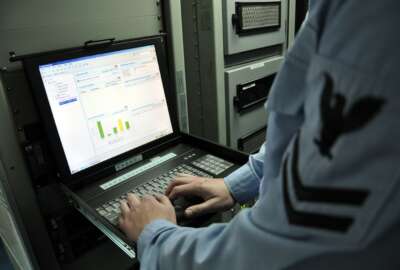Insight by Amentum
Digital engineering takes front and center
Although digital engineering in some form dates to the World War II era, modern computing capabilities helped cause a step-function advance in the early 2000s,...
Design and engineering are going digital. In fact, they’ve gone digital to the extent that teams creating even complex projects can expect to go from digital model to first physical iteration without the need for costly prototypes.
Although digital engineering in some form dates to the World War II era, modern computing capabilities helped cause a step-function advance in the early 2000s, according to Vlad Bacalu, senior vice president for strategic and technical solutions at Amentum.
“A new concept was developed called model based system engineering, Bacalu said. “It came about as an alternative, replacing documents and paper-based information with models that can be shared and used by the different disciplines working on the complex systems.”
The benefit: “Everybody has the same view of the same model that simulates the asset or the system,” Bacalu said. “Collaboration can happen that way.”
Beyond CAD
Model-based systems engineering (MBSE) built on the electronic drawings typified by AutoCAD, Bacalu said. MBSE added to 3-dimensional models metadata about materials, components and their manufacturers, even part numbers. Then, it models the actual behavior of the final system. If nothing else, this approach assures that everyone is working from the same measurement systems. Bacalu cited the crash of a Mars orbiter in 1998 because NASA used metric measures and a contractor used the English measure system.
Digital engineering becomes ever more fine-grained comprehensive as models take in data about smaller and smaller components and details.
Bacalu said digital engineering ideally begins at the requirements stage for a system, and projects through to eventual operations and maintenance. That is, it covers the lifecycle of a system and enhances planning. He said Amentum’s own engineering consulting takes this approach to clients in intelligence, homeland security, defense and space.
“We help our clients with decision making and analyzing their requirements, and then help them build the right systems, Bacalu said. The company brings to this effort a strong capability in analyzing large amounts of data. For instance, it can take telemetric data from jet engine operations – which might amount to terabytes during a single mission – and use it for predictive maintenance and failure prevention.
Bacalu said you can think of digital engineering in terms of three main components. It starts with requirements management, as the organization “gathers all the requirements, making sure that those requirements are documented, and that they meet the mission that the clients have.”
The second component encompasses change management, Bacalu said, “because we all know that during a project, we have situations where things change, some things might not work, or new expectations or requirements come in.” He noted Amentum not only analyzes changes but also applies risk analysis, “where we look at the risks associated to making those changes to make sure that at the end of the day, the main objective of that system is maintained.”
Component three of digital engineering brings configuration management. “It refers to the entire lifecycle of the system, asset or part,” Bacalu said. He added, “And in this lifecycle, we are talking about the design phase, the installation phase, the commissioning phase, and then the operation and maintenance phase, which is the longest part in this lifecycle.” He said digital engineering ideally encompasses the eventual decommissioning and disposal of the asset.
Long life, lots of change
A comprehensive, digital approach to engineering pays dividends to a project, especially given the long lives of many Defense Department systems. Bacalu said new missions, new technology, or simply improvements along the way all must be evaluated, tracked and validated.
“And that, at the end, the function of that system is maintained as desired,” he said. “Change management is probably one of the most complex parts of system engineering, because the other parts, they deal with the beginning and have a shorter lifespan.”
Throughout the lifecycle, the data generated by a system can work in two directions. Going forward, it can inform the development of next generations or iterations of a system. Looking back, the data can help improve the accuracy and utility of the modeling process itself.
Bacalu noted that Amentum has partnered with a company called Beast Code “that combines our strong engineering capabilities with their digital twin modeling processes.” The initiative underscores the importance of reliable models that are not static but rather have simulation qualities to show how the system will eventually operate in the real world.
The partnership has produced some very large scale digital twins for critical mission support systems, Bacalu said.
Digital engineering applies not only to physical systems but also to software development projects, Bacalu noted. “Again, you’re talking about those components of system engineering, where you have the requirements management,” he said. “With complex software systems, you have to keep track of all the different requirements. The configuration and change management are also important parts of digital engineering in the software area.”
Amentum’s software center of excellence has also had success in helping the Navy manage and deploy complex applications, Bacalu said.
Copyright © 2025 Federal News Network. All rights reserved. This website is not intended for users located within the European Economic Area.
Related Stories
Featured speakers
-

Vlad Bacalu
Senior Vice President, Strategic and Technical Solutions, Amentum
-

Tom Temin
Host, Federal Drive, Federal News Network
Upcoming Events
Related Stories
Top Stories

Vlad Bacalu
Senior Vice President, Strategic and Technical Solutions, Amentum

Tom Temin
Host, Federal Drive, Federal News Network






